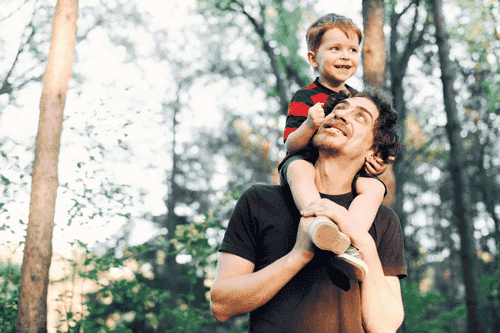In the garden of our friendships there are brighter figures and others more discreet. Even if we are more intimate with some friends, we must be grateful for the presence of all these people.

Written and verified by the psychologist GetPersonalGrowth.
Last update: 15 November 2022
We all have or have had passive and active friendships at one time or another in our lives. This distinction does not reflect the social ties that enrich us from those that don't.
In reality, they are the frame of that greener and more luxuriant garden of human relationships, inhabited by flowers, shrubs and weeds of all kinds… This variegated flora makes our daily life more beautiful.
There are some plants that we appreciate a lot more. In our personal circle there are people with whom we have greater complicity and also figures with whom, although not intimate, we like to talk, share occasional events, see them from time to time.
We are social beings who need daily interactions to stay healthy. We are equally grateful for that conversation with our baker, that coffee with a colleague at work, that more accomplice walk with our best friend to talk about our concerns.
There are different types of friendship, the important thing is that they are sincere and enriching, the degree of intimacy doesn't really matter. Authenticity is always paramount.
Even so-called weak bonds, or passive friendships, are important in our life: they are people who, without establishing a bond of intimacy, generate trust and positive moments in our daily life.
Passive and active friendships: how do they differ?
If you care about your relationships, you will agree that calling someone a "friend" is special and meaningful. It is not done every day and not everyone earns this qualification. However, there are also those who, far from understanding the depth of this term, sometimes violate it by breaking down the sacred temple of trust and mutual respect.
In any case, we all have or have had more than one friendship and we know how rewarding it is to have a life ally, a daily companion and an emotional refuge where everything fits together: joys and sorrows.
However, in the 70s, Mark Granovetter, a professor of sociology at Stanford University, published research entitled The Strength of Weak Ties, which reformulated the concept of friendship.
It is good to recover this work in the age of new technologies. In a certain sense, with Granovetter's theory of passive and active friendships, we understand much more the importance that friends present on social networks can have.
We cannot minimize their importance, because sometimes that person we know or resent on Facebook or any application can be as important as a childhood friend. Let's find out more about this interesting categorization.
Active friendships: the deep connection that enriches our life
Active friendships are present in our daily life in many ways. We consider them our family and they know pretty much everything about us.
We share with them experiences, values, secrets, complicity, fragments of sad moments and many moments of happiness in common. They are also our constant refuge when something goes wrong and, at times, they are more necessary to us than to our partner.
Some have been with us for decades, ever since we started primary or secondary school, and the "crush" was almost instantaneous. Others are recent acquisitions, people who crossed our path not long ago, but which we seem to know since we came into the world.
The interaction is constant. It doesn't matter that sometimes they are distant, because the worry about what they are doing, what is afflicting them or what series they are watching is constant. And that stainless support, that knowing how to be present in every moment and circumstance, makes us happy.
Passive friendships: subtle bonds that make us feel good
Passive and active friendships are not opposites. One is not the opposite of the other. In fact, they are complementary. Indeed, in recent years, Dr. Mark Granovetter's theory has been revived as a clear reflection of what is happening in this new technology and digital society.
Passive friends are people outside our innermost circle, but whose interaction instills well-being. An example of this would be a neighbor, a friend of a relative, that girl in the shop downstairs, that co-worker we get along with, that person we see once a week on the subway and with the which we chat interestingly.
Passive and active friendship differ fundamentally in closeness and affection. A weak bond is also what we can establish with those we meet on social networks. We like to talk to them, share common interests. However, we know that many of these relationships never go further.
As sociologist Mark Granovetter explained to us, these passive, non-binding friendships are a great daily stimulus. They bring us joy, new perspectives and moments of sweet relaxation. They too convey knowledge, positive emotions and a sense of belonging.
Close (and active) friends are important, but research shows us that building networks of casual relationships, both through new technologies and in our daily interactions in the social world, also brings happiness and a sense of belonging.
Friendship is a vital need
Good friends are better if they are few; as for passive friendships, the more the better. To understand this idea, let's take an example. Steve Jobs designed the Pixar building with a very specific idea in mind: to make it easier for employees from different departments to meet by chance.
The idea was to achieve that kind of passive friendship that stimulates creativity. These casual encounters were always positive, friendly and enriching, ideas flowed and stress was reduced. It was not necessary to create "great friendships", but those bonds of courtesy and kindness where very often new ideas flowed. This was the key.
To mediate our well-being, it is good to elevate all daily social contacts. Short conversations, a "how are you?" or a "how's your day?" always enrich us. And these bonds, like healthy friendships, must be nurtured and promoted.


























